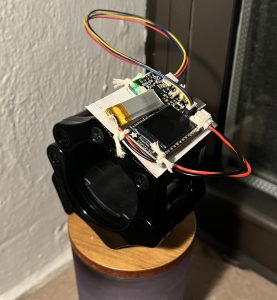I was finally able to figure out what was wrong with saving calibration status. Now I’m able to calibrate, power off, then upload to see fully calibrated accelerometer and gyroscope. However, there is a slight hiccup that the magnetometer does not save calibration and I’m not quite sure why that is yet. Calibrating it only involves slightly moving the sensor, so even though it starts at 0 when restoring calibration, it easily reaches 3 (fully calibrated) with minimal motion. In the context of our device this shouldn’t be an issue but I will look for some fixes next week just in case. All of my sensor testing was done with an Arduino, but I just cleared our ESP to work the same way with our scripts. Because we chose an Adafruit ESP with a screen as our secondary component, I also was working on displaying battery status when the device is on. There isn’t as much documentation on how to do this as I was hoping, so it’s not working quite yet but with a bit more research I should be able to reflect the message on the screen (for now it successfully prints in the basic serial monitor). I also began to work on the final presentation and develop the physical build of the sensor. Lastly, I spoke with the team about how we’d want to represent the balance metric and we decided on graph variation that will maintain a steady state until it senses a tilt, in which the output should move in either +y or -y to indicate imbalance (fairly basic).
I am a bit behind on some of the testing procedures due to setbacks in the data department, but it shouldn’t be too hard to catch up after completing the device assembly.
So, briefly, next week I’d like to: attempt to resolve magnetometer not restoring calibration, debug battery visual appearing on ESP screen, and engage in some of our testing procedures.



